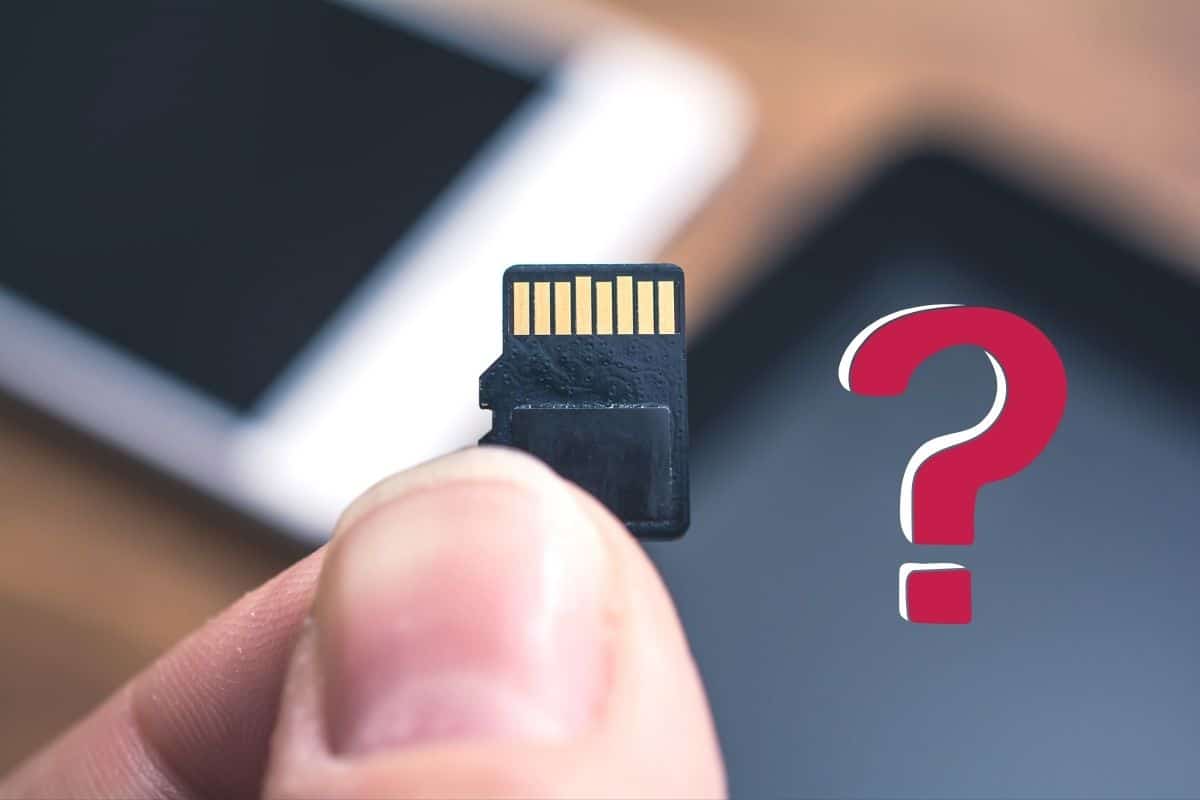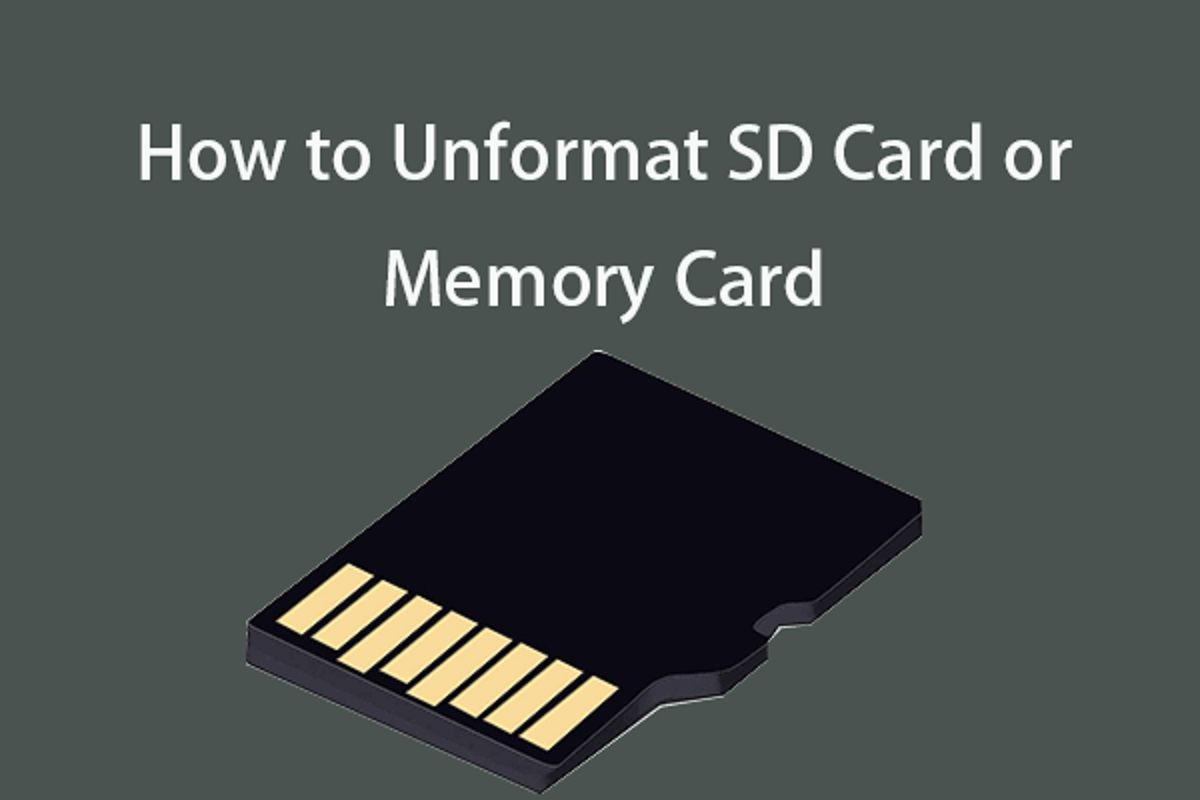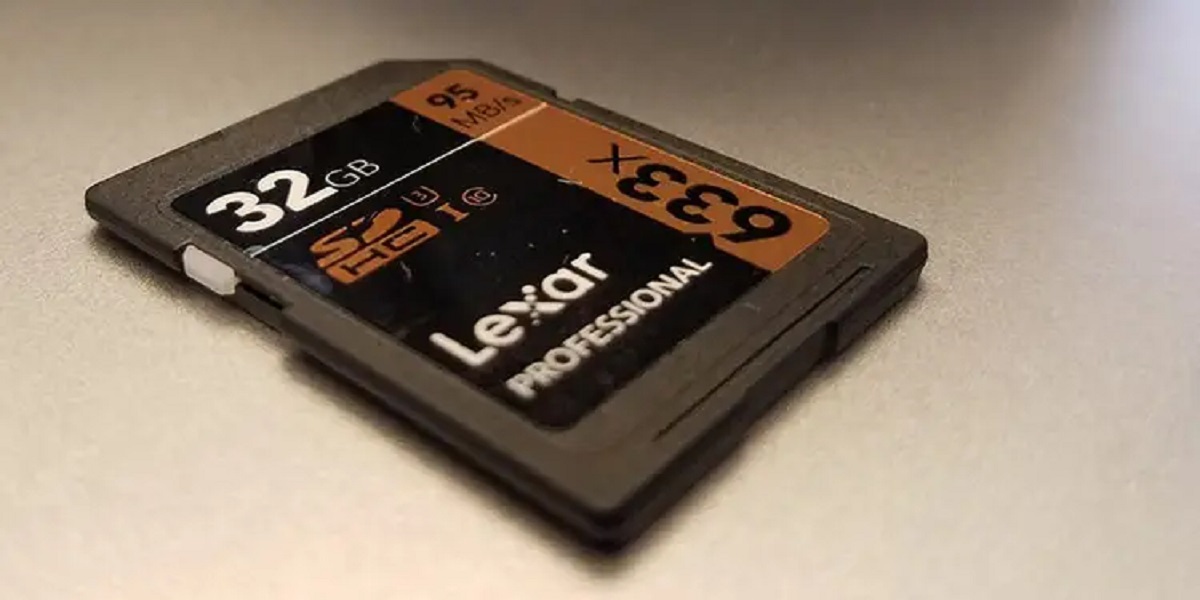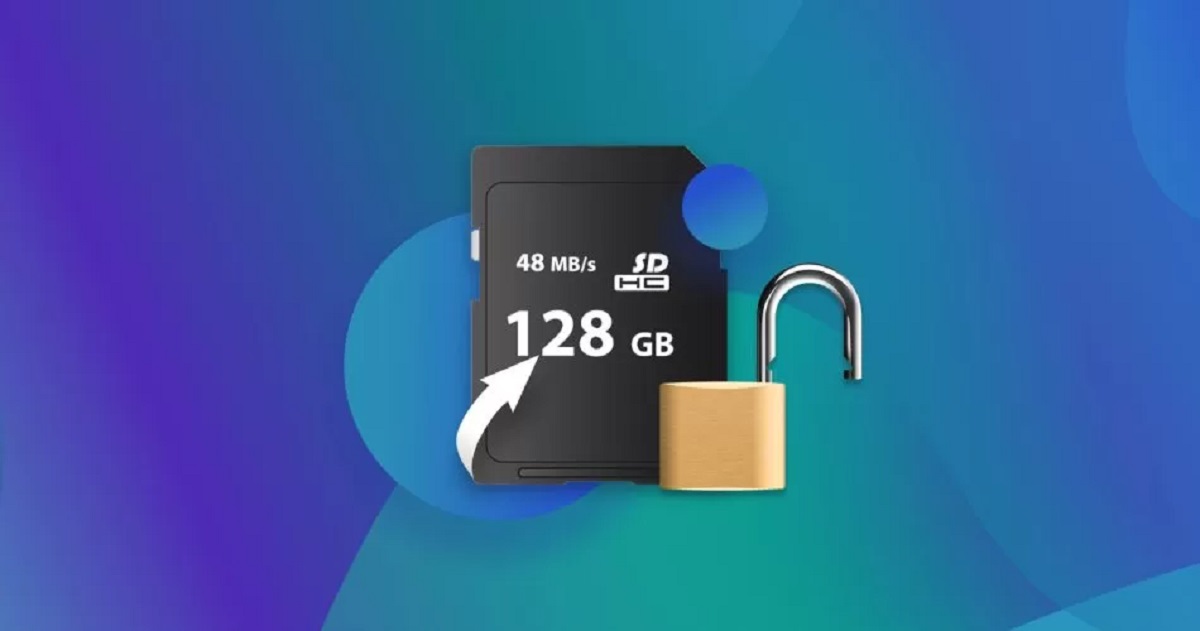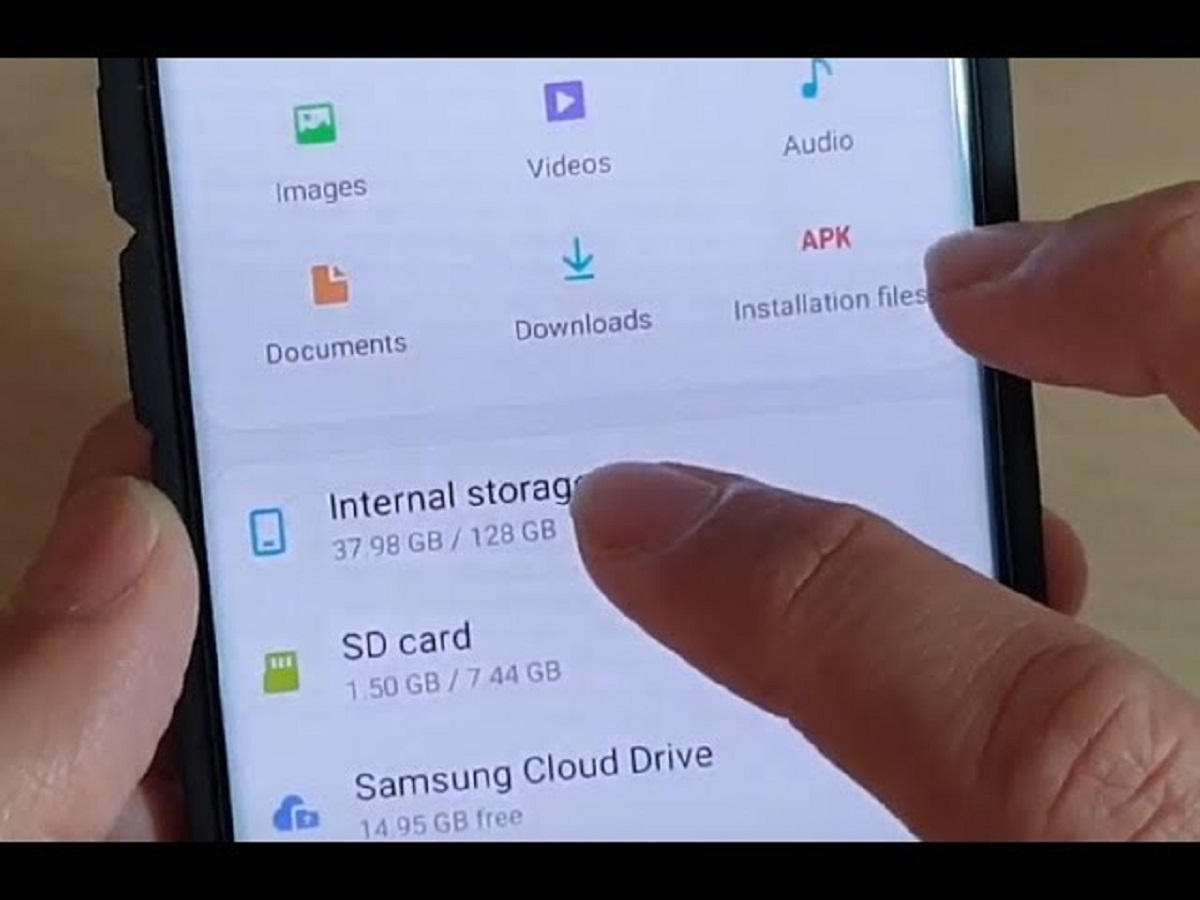Introduction
An SD card, or Secure Digital card, is a small and portable memory storage device that is commonly used in various electronic devices such as digital cameras, smartphones, tablets, and portable gaming consoles. It provides an easy and convenient way to expand the storage capacity of these devices, allowing users to store and transfer large amounts of data such as photos, videos, music, and documents.
SD cards come in different sizes and storage capacities, ranging from a few gigabytes to several terabytes, making them ideal for both personal and professional use. They are designed to be durable and resistant to environmental factors such as shock, humidity, and extreme temperatures, ensuring that your valuable data remains protected.
In this article, we will explore how an SD card works and the methods it uses to store and retrieve data. We will also delve into the file systems used by SD cards and provide tips on how to safely store and retrieve data to maximize their lifespan. So, whether you are a photography enthusiast looking to expand your camera’s storage or a smartphone user concerned about running out of space, this article will provide you with the necessary insights to make the most of your SD card.
What is an SD Card?
An SD card, short for Secure Digital card, is a type of flash memory storage device that is widely used to expand storage capacity in electronic devices. It was developed by SanDisk, Toshiba, and Panasonic, and has become the de facto standard for portable storage in various devices such as digital cameras, smartphones, tablets, and portable gaming consoles.
SD cards are small in size, typically measuring 32mm x 24mm x 2.1mm, making them highly portable and easy to handle. They feature a thin, rectangular shape with a lock switch on the side to prevent accidental data loss or tampering. The card itself consists of a non-volatile memory chip encased in a durable plastic shell, offering protection against physical damage and environmental factors.
One of the key advantages of SD cards is their versatility. They are available in different sizes, such as standard SD, miniSD, and microSD, allowing compatibility with a wide range of devices. Additionally, SD cards come in various storage capacities, starting from a few gigabytes (GB) to several terabytes (TB), enabling users to choose the right card size based on their storage requirements.
SD cards also offer quick and easy data transfer. They utilize an integrated controller that enables high-speed reading and writing capabilities, making it efficient to transfer large files, such as high-resolution photos or HD videos, to and from the card.
In summary, an SD card is a portable and versatile flash memory storage device that provides convenient expansion of storage capacity for various electronic devices. Its compact size, compatibility, and high-speed data transfer make it a popular choice among users who need additional storage for their digital content.
Common Types of SD Cards
SD cards come in different types and sizes to suit the specific needs of various devices. Here are some of the common types of SD cards available in the market:
- Standard SD Card: The standard SD card, also known as SDSC (Secure Digital Standard Capacity), is the original and most commonly used type of SD card. It has a storage capacity of up to 2 gigabytes (GB) and is typically used in older digital cameras, audio players, and other devices that have limited storage requirements.
- SDHC (Secure Digital High Capacity) Card: SDHC cards were introduced as an extension to the standard SD cards to address the growing storage needs of modern devices. These cards have a storage capacity ranging from 4GB to 32GB, making them suitable for capturing high-resolution photos, recording HD videos, and storing larger files.
- microSD Card: The microSD card is a smaller version of the standard SD card and is commonly used in mobile phones, digital cameras, and other portable devices. These cards are available in various capacities and are compatible with devices that support microSD and microSDHC cards. MicroSD cards are often used with an adapter to fit into standard SD card slots.
- SDXC (Secure Digital eXtended Capacity) Card: SDXC cards are designed for users who require even larger storage capacities. These cards can hold between 32GB to 2 terabytes (TB) of data. They are commonly used by professional photographers, videographers, and other users who deal with large amounts of data, such as 4K videos and RAW image files.
- UHS (Ultra High-Speed) SD Card: UHS SD cards are an upgraded version of SD cards that offer faster data transfer speeds. They are available in two classes – UHS-I and UHS-II, with the latter offering even higher transfer rates. These cards are ideal for devices that require rapid data transfer, such as high-resolution cameras and 4K video recorders.
It’s important to note that different devices have different compatibility requirements for SD cards. Make sure to check your device’s specifications to ensure compatibility with the appropriate type and capacity of SD card.
Understanding the different types of SD cards will help you choose the right card for your device, ensuring optimal performance and storage capacity.
How Does an SD Card Store Data?
An SD card stores data using flash memory technology. Flash memory is a type of non-volatile memory, which means it can retain data even when it’s not powered. This makes it an ideal storage solution for portable devices like SD cards.
Inside an SD card, you’ll find several memory cells that are organized into blocks. Each memory cell can be programmed to store a binary value, either a 0 or a 1. These binary values are used to represent digital information, such as documents, photos, videos, or any other type of data.
When you save data to an SD card, the data is divided into small sections called pages. Each page contains a fixed number of bytes, usually 512 bytes. The data is then written to the appropriate pages in the memory cells of the SD card.
One of the important aspects of storing data in an SD card is the method called wear leveling. Wear leveling ensures that data is evenly distributed across all memory cells of the SD card. This prevents excessive wear on specific cells, which can lead to data corruption or loss over time. Wear leveling technology increases the lifespan of the SD card and ensures reliable storage of data.
In addition to wear leveling, SD cards also use error correction codes (ECC) to detect and correct any data errors that may occur during the storage process. ECC adds additional bits of information to the stored data, allowing the SD card to verify the integrity of the data and fix any errors that might have occurred during reading or writing.
Overall, SD cards provide a reliable and efficient method to store and retrieve data. They offer ample storage capacity, fast data transfer rates, and durability, making them suitable for a wide range of applications. Whether you’re capturing precious memories with your digital camera or storing important files on your smartphone or tablet, SD cards ensure that your data remains secure and easily accessible.
The File System Used by SD Cards
The file system used by SD cards determines how data is organized, stored, and accessed on the card. The most common file system used by SD cards is the FAT32 (File Allocation Table) file system. It is supported by almost all devices that use SD cards, including cameras, smartphones, and tablets.
The FAT32 file system is known for its compatibility across different operating systems, making it versatile and widely adopted. It allows for easy interchangeability of SD cards between devices without the need for additional software or drivers. This file system supports file names up to 255 characters long and can store files up to a maximum size of 4GB.
One of the key advantages of the FAT32 file system is its simplicity. It uses a table-like structure to keep track of file names, locations, and other metadata. This table, called the File Allocation Table, serves as a roadmap to locate and retrieve specific files stored on the SD card. The FAT32 file system easily allows for the deletion, modification, and addition of files, making it user-friendly and efficient.
However, the FAT32 file system does have its limitations. Due to its age and design, it is not suitable for storing individual files larger than 4GB. If you need to store large files, such as high-quality videos or large software applications, you may need to consider formatting your SD card with an alternative file system.
Fortunately, SD cards support other file systems as well, such as exFAT and NTFS. The exFAT (Extended File Allocation Table) file system is an upgraded version of FAT32 that addresses the file size limitations. It supports individual files larger than 4GB, making it ideal for storing high-quality videos and large files. However, exFAT may not be compatible with older devices that only support the FAT32 file system.
On the other hand, NTFS (New Technology File System) is a file system primarily used in Windows operating systems. While it offers advanced features and better file management capabilities, it may not be compatible with all devices, especially those running on non-Windows platforms.
Understanding the file system used by your SD card is essential for compatibility and efficient data management. Whether it’s the widely adopted FAT32 file system or alternative file systems like exFAT or NTFS, choosing the right file system ensures seamless data transfer and accessibility across different devices.
Understanding the FAT32 File System
The FAT32 (File Allocation Table) file system is a widely used file system for SD cards and other storage devices. It was introduced as an extension to the original FAT file system to overcome limitations and improve storage efficiency.
One of the key features of the FAT32 file system is its compatibility with different operating systems. It is supported by various platforms, including Windows, macOS, and Linux, making it a versatile choice for SD card storage. This compatibility allows for easy interchangeability of SD cards between devices, without the need for additional software or drivers.
The FAT32 file system utilizes a table-like structure called the File Allocation Table. This table contains entries that keep track of file names, sizes, locations, and other metadata. Each entry in the File Allocation Table corresponds to a cluster, which is the smallest unit of space allocated to store data on an SD card.
When a file is stored on an SD card formatted with FAT32, it is divided into clusters. The File Allocation Table keeps track of which clusters belong to each file. This allows for efficient storage and retrieval of data, as the clusters can be located and read in sequential order.
One of the advantages of the FAT32 file system is its simplicity. The file system allocates storage space in clusters, which are fixed in size (usually 4 KB). This simplicity makes the FAT32 file system easy to implement and understand, and it also contributes to its compatibility across different devices.
However, one limitation of the FAT32 file system is its maximum file size. In the FAT32 file system, individual files cannot exceed 4 gigabytes (GB) in size. This limitation may be problematic when dealing with large files, such as high-definition videos or complex software applications. If you need to store files larger than 4GB, it may be necessary to consider alternative file systems like exFAT or NTFS.
Despite its limitations, the FAT32 file system remains a popular choice for SD card storage due to its compatibility and simplicity. It provides efficient storage and retrieval of files, making it suitable for a wide range of devices and applications. Understanding the FAT32 file system allows users to manage their SD card storage effectively and ensure seamless compatibility with different devices.
Other File Systems Supported by SD Cards
While the FAT32 (File Allocation Table) file system is the most common and widely supported file system for SD cards, there are other options available that offer different capabilities and features.
1. exFAT (Extended File Allocation Table): exFAT is an enhanced file system that addresses the file size limitations of FAT32. It was developed by Microsoft, primarily for use in portable storage devices such as SD cards. Unlike FAT32, exFAT supports individual file sizes larger than 4 gigabytes (GB). This makes it suitable for storing large files, such as high-definition videos and large software applications. exFAT is compatible with various operating systems, including Windows, macOS, and some Linux distributions. However, compatibility may vary on older devices or non-Windows platforms.
2. NTFS (New Technology File System): NTFS is another file system developed by Microsoft. It is mainly used in Windows operating systems. NTFS offers advanced features such as file permissions, encryption, and compression. It provides better file management capabilities and improved data integrity compared to FAT32 or exFAT. However, it may have limited compatibility with devices running non-Windows operating systems. NTFS is often used when large file sizes or advanced features are required, but it may not be the best choice for cross-platform usage or compatibility with older devices.
3. HFS+ (Hierarchical File System): HFS+ is the default file system used on Apple’s macOS devices. It supports features such as journaling, file permissions, and case-sensitive file names. HFS+ is compatible with devices running macOS, but it may have limited compatibility with non-Apple platforms. If you primarily use your SD card with macOS devices, formatting it with the HFS+ file system can provide advantages in terms of compatibility and functionality within the Apple ecosystem.
When selecting a file system for your SD card, it is crucial to consider compatibility with the devices you will be using, as well as the specific needs of your data storage requirements. If interoperability across different platforms is important, consider using FAT32 or exFAT. If your primary devices are running Windows and you require advanced features, NTFS might be a suitable choice. On the other hand, if you primarily use macOS devices, HFS+ might be the best option for seamless integration.
It’s worth noting that formatting an SD card erases all data stored on it, so be sure to back up your data before reformatting. Additionally, some devices may have restrictions on the maximum supported SD card capacity or file system type, so it’s always recommended to check the device’s specifications and compatibility guidelines.
Factors Influencing SD Card Storage Capacity
SD cards come in various storage capacities, ranging from a few gigabytes to several terabytes. The storage capacity of an SD card depends on several factors that influence its overall size and capabilities. Understanding these factors can help you choose the right SD card for your specific needs.
1. Technological Advancements: One of the significant factors influencing storage capacity is technological advancements in flash memory technology. As technology improves, manufacturers are able to produce more compact and powerful memory chips, resulting in higher storage capacities for SD cards.
2. Manufacturing Process: The manufacturing process used by the SD card manufacturer also plays a role in determining storage capacity. By optimizing production techniques and increasing yields, manufacturers can efficiently create SD cards with larger storage capacities.
3. NAND Flash Memory Type: The type of NAND flash memory used in an SD card can affect its storage capacity. There are different generations of NAND flash memory, such as Single-Level Cell (SLC), Multi-Level Cell (MLC), and Triple-Level Cell (TLC). Each subsequent generation typically offers higher storage capacity compared to the previous one.
4. Manufacturing Cost: The cost of producing SD cards with larger storage capacities is an important factor. As storage capacity increases, the production cost may also increase due to more advanced manufacturing processes and higher-quality components. The market demand and competition among manufacturers also influence the cost of SD cards.
5. Market Demand: The demand from consumers and industry sectors for larger storage capacities influences the offerings of SD card manufacturers. As the need for more extensive data storage increases, manufacturers strive to meet this demand by producing SD cards with higher capacities.
6. Device Compatibility: The maximum storage capacity that a device can support also affects the available SD card capacities. Older devices or those with limited hardware capabilities may have restrictions on the maximum SD card size they can accommodate. It’s essential to check the device specifications to ensure compatibility with the desired storage capacity.
It’s important to note that the usable storage capacity of an SD card is typically slightly less than the advertised capacity. This is due to the formatting process, where some space is allocated for the file system, metadata, and system files.
Considering these factors, it is crucial to assess your storage needs and verify device compatibility when selecting an SD card. Whether you’re a professional photographer, a videographer, or a casual user, understanding the factors influencing SD card storage capacity will help you make an informed decision and ensure you have enough space for all your data storage requirements.
How Does Data Retrieval Work on an SD Card?
Data retrieval on an SD card involves accessing the stored information and transferring it back to a device or computer for viewing or further processing. When you retrieve data from an SD card, the device follows a specific process to locate and retrieve the desired information.
1. File System Navigation: The device first reads the file system structure of the SD card to understand how data is organized and stored. The file system provides information about the file names, sizes, locations, and other metadata associated with the stored data.
2. File Location: Once the file system is scanned, the device determines the location of the desired file on the SD card. The device refers to the file allocation table (FAT) or other data structures of the file system to locate the clusters or blocks where the file is stored.
3. Block Reading: The device reads the data blocks or clusters that contain the file data. This process involves accessing the specific memory cells or sectors on the SD card where the data is stored. The device reads the data from these memory areas and temporarily stores it in its internal memory for further processing.
4. Data Reconstruction: The retrieved data blocks are then reconstructed into the original file format. This process involves combining the data blocks in the correct order, applying any necessary algorithms or decoding techniques, and checking for data integrity to ensure accurate reconstruction of the file.
5. Transfer to Device: Once the data is reconstructed, it is transferred from the SD card to the device for user access or viewing. This can be done by displaying the data on a screen, playing audio or video files, or transferring the files to a computer or other storage devices.
The data retrieval process on an SD card is typically seamless and fast if the file system structure is intact and the SD card is in good working condition. However, certain factors can affect the success of data retrieval, such as physical damage to the SD card, file system corruption, or errors in the memory cells. In such cases, specialized software or services may be required to recover the lost or damaged data.
It is important to handle and store SD cards properly to minimize the risk of data loss or corruption. Avoid physical damage, extreme temperatures, exposure to moisture, and abrupt removal of the SD card from devices during data transfer. Regularly backing up your data from the SD card to other storage devices can also provide an extra layer of protection against data loss.
Understanding how data retrieval works on an SD card allows users to effectively manage and retrieve their valuable data, ensuring a smooth and reliable experience when using SD cards for storage.
Tips for Safely Storing and Retrieving Data on an SD Card
SD cards are a convenient and portable storage solution for your valuable data. To ensure the safety and integrity of your data, it’s important to follow these tips for storing and retrieving data on an SD card:
1. Handle with Care: Avoid touching the metal connectors on the SD card, as oils and dirt from your fingers can cause connection issues. When inserting or removing the SD card from a device, do so gently to prevent any physical damage.
2. Keep Away from Water and Extreme Temperatures: SD cards are sensitive to moisture and extreme temperatures. Keep your SD card in a dry and cool environment to prevent damage. Avoid exposing the card to direct sunlight, excessive heat, or extreme cold, as these conditions can affect its performance and lifespan.
3. Use a Protective Case or Sleeve: Invest in a protective case or sleeve for your SD card to shield it from physical damage. This will provide an added layer of protection when carrying or storing the card.
4. Format the SD Card Correctly: Before using an SD card, it’s crucial to format it correctly. This helps ensure compatibility with your device and provides a clean file system to avoid compatibility issues or data corruption. Refer to your device’s user manual or formatting instructions for the recommended file system and formatting process.
5. Safely Eject the SD Card from Devices: Always eject the SD card properly from devices to prevent data loss or corruption. Do not remove the card while the device is still accessing or writing data to it. Use the appropriate eject option in the device’s operating system to safely disconnect the SD card.
6. Regularly Backup Your Data: To safeguard your data, make it a habit to regularly back up the content on your SD card to another storage device, such as a computer or external hard drive. This provides an additional layer of protection in case of accidental deletion, SD card failure, or loss.
7. Scan for Viruses: Just like any other storage medium, SD cards can be susceptible to viruses and malware. Scan the SD card for viruses using reliable antivirus software before transferring data to your computer or other devices to minimize the risk of data corruption or device infection.
8. Avoid Overloading the SD Card: It’s recommended to avoid overloading the storage capacity of your SD card. Leaving some free space helps maintain optimal performance and reduces the risk of data fragmentation. As a general guideline, aim to keep at least 10-20% of the storage capacity free on the card.
9. Keep Track of Data Organization: Properly organize your files on the SD card by using logical folders or directories. This makes it easier to locate specific files later and reduces the risk of accidental deletion or confusion when accessing the data.
10. Use Reliable Data Recovery Software: In case of accidental data loss or corruption, consider using reliable data recovery software. These tools can help recover lost or deleted files from your SD card, increasing the chances of retrieving valuable data.
By following these tips, you can ensure the safe storage and reliable retrieval of your data on an SD card, protecting your valuable photos, videos, documents, and other important files.
Conclusion
SD cards have revolutionized the way we store and manage data on portable devices. Whether you’re a professional photographer, a casual user, or someone looking to expand their device’s storage capacity, understanding how SD cards work and implementing best practices for data storage and retrieval is crucial.
In this article, we explored the fundamentals of SD cards, including their purpose, types, and storage capacities. We examined the mechanisms behind how an SD card stores and retrieves data, delving into the file systems used, such as FAT32, exFAT, NTFS, and HFS+. Each file system offers its own advantages and considerations, depending on compatibility requirements and specific data storage needs.
We also covered important factors to consider when choosing an SD card, such as technological advancements, manufacturing processes, NAND flash memory type, manufacturing cost, market demand, and device compatibility. These factors play a vital role in determining an SD card’s storage capacity and overall performance.
To ensure the safe storage and retrieval of data on an SD card, we provided helpful tips. These included handling the card with care, keeping it away from water and extreme temperatures, using protective cases or sleeves, properly formatting the card, safely ejecting it from devices, regular data backups, scanning for viruses, avoiding overloading the storage capacity, organizing data, and relying on reliable data recovery software when needed.
By following these guidelines, you can maximize the lifespan of your SD card, safeguard your valuable data, and ensure smooth data retrieval and seamless compatibility with different devices.
Remember, data storage and retrieval are critical aspects in our digital lives, and SD cards offer an excellent solution for expanding storage and managing data efficiently. With the right knowledge and practices, you can make the most of your SD card’s capabilities and ensure that your data remains protected and easily accessible.







